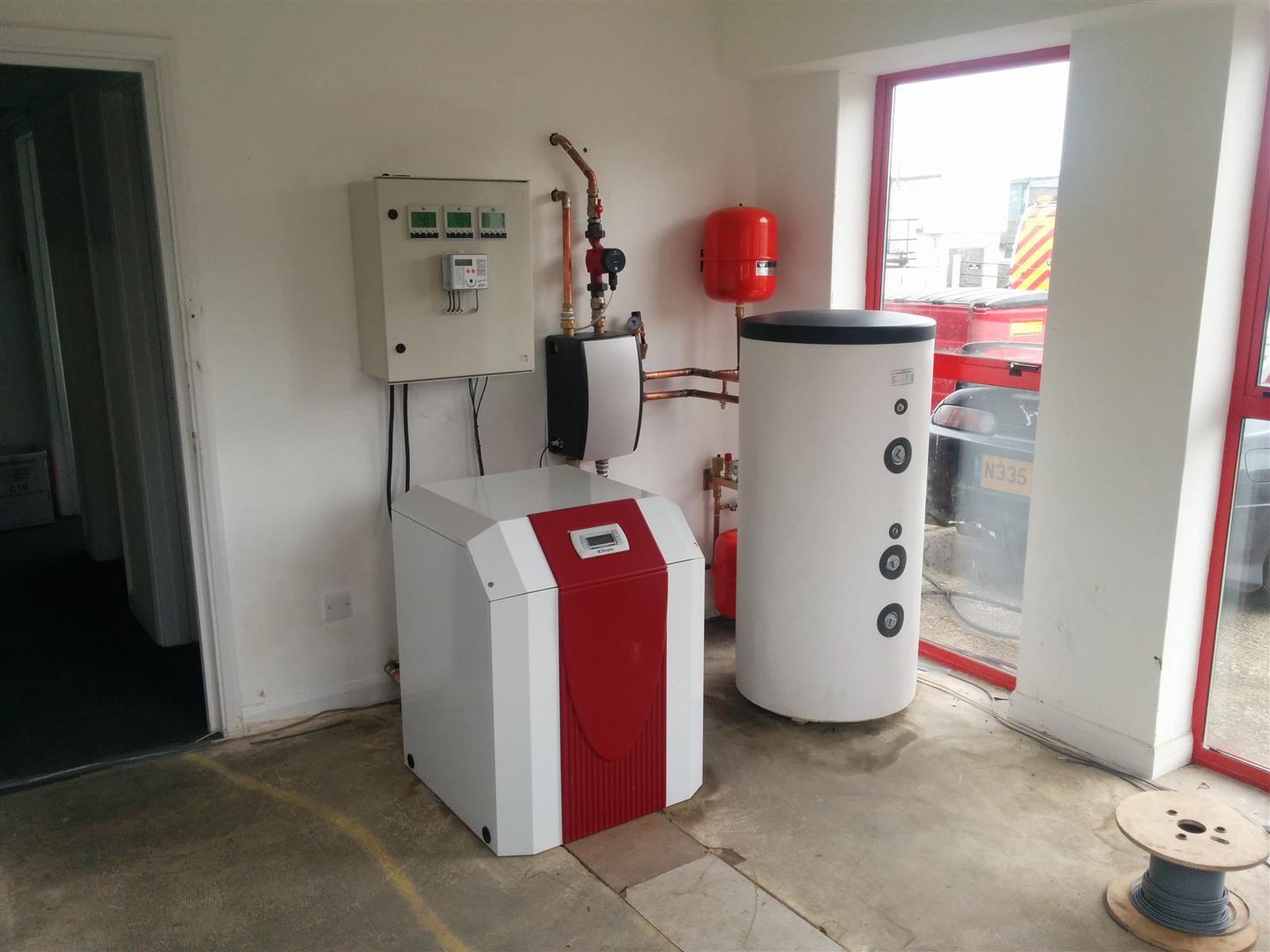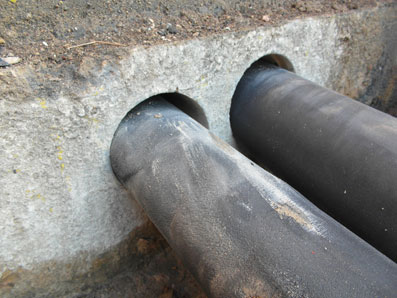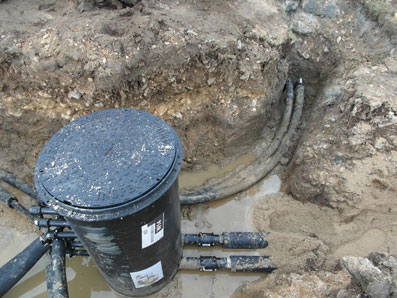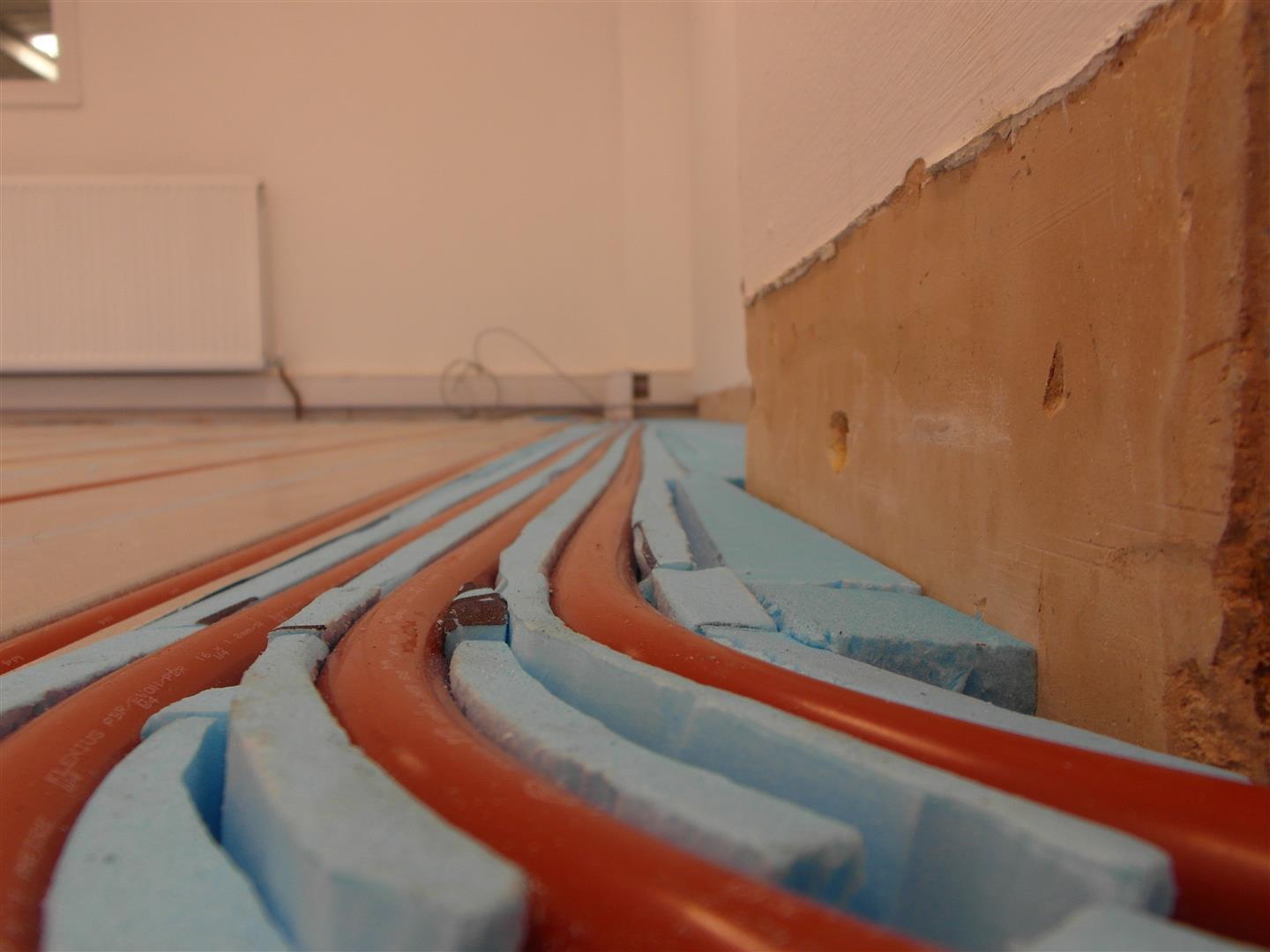We specialise in the design, supply, installation and maintenance of heat pump systems. We create heating, cooling and hot water systems suited to your individual needs. Our design is focused to ensure you gain maximum benefit from the Government Renewable Heat Incentive scheme which pays you for the heat you produce from renewable sources. This also means maximum reduction to carbon emissions
As well as designing and installing your heat pump systems we can also guide you through all the administrative work relating to your application to join the Renewable Heat Incentive scheme. At Heat Collector we pride ourselves on being attentive and innovative.
Come and visit our showroom where you can see our ground source heat pump and a range of heat emitters in full working order. We display data in real time so you can see exactly what is going on and the savings being generated by the system. We can show you how you can save a huge amount on your heating cost.
What are heat pumps?
Heat pumps pumps are used to replace boilers in central heating systems. They absorb heat from the environment which can be used to heat radiators, underfloor heating or warm air convectors. It can also be used to provide hot water for your home or business. Heat pumps use conventional refrigeration technology to extract the sun’s heat stored in the air or the ground around your premises and raise it to a temperature suitable for heating purposes. This principle works even in the middle of winter with outside temperatures as low as -15°C.
How much do they cost?
A rough guide would be £1,000 for each kW that’s required to heat your home. Obviously no two installations are the same and costs vary depending on the size of your home, how well insulated it is and how long ago it was built. For a 3 bedroom house built since 1960 it would probably cost around £5,000 for an air source heat pump and £7000 for a ground source heat pump plus around £2,000 for the installation. Then you need a special hot water tank and perhaps additional radiators, possibly another £3,000. If you chose a ground source heat pump it will cost more to bury the pipes outside say another £5,000 to £15,000. This is expensive compared to a traditional boiler but don’t forget a well designed heat pump installation can save up to 50% on your heating bills and the government will be paying you via the Renewable Heat Incentive for 7 years for domestic installs and 20 years for non domestic installations. This payment is designed to compensate you for the additional cost of installing this carbon saving technology.
RHI Cashback
Under the UK Government’s Renewable Heat Incentive (RHI) scheme, if you install an eligible renewable heating technology, you receive quarterly payments for seven years. The scheme is designed to cover the extra additional cost of installing this equipment instead of traditional boilers and payment is based on the heat you produce from renewable sources. This is the total heat demand for heating and hot water as shown on your EPC (energy performance certificate) less the calculated amount of electricity required to make the heat. This figure will vary depending on the design of your system. The lower the temperature in the radiators the greater the efficiency of the system and lower the amount of electricity it’s going to take to generate the heat. The 2015-2016 rate is 19.2 pence per kilowatt hour (unit) for ground source heat pumps and 7.4 pence per kilowatt hour (unit) for air source heat pumps.
Our Ground Source Heat Pump Figures April 2014
We believe in this technology and the savings that it offers so in an effort to be transparent we thought it would be a good idea to show our data from April 2014 so you can see how efficient heat pumps can be & just how much money you can save!
Heat Produced
26,806 kWh
Electricity Used
4,562 kWh
Heating Cost Per kWh
0.02301p
Cost Since April 2014
£616.84
RHI Cashback
£2,323.12
Profit On Heating
£1,715.28
SPF Value
5.88
CO2 Saved vs Electric
13.1 Tons
Savings & RHI Payments During The Period Vs Electric Heating
£5,339.45
Quick guide: Ground source heat pump installation
Boreholes / Trenches
It all starts with a borehole, after the drilling is complete, pipes are inserted into the borehole and the all the boreholes are joined together in the Star Chamber. Flow and return pipes are then connected from this to the heat pump. If you have enough room the heat extraction pipes can be laid in trenches which saves on drilling costs.
Connect it up
This particular installation required 4 boreholes 80 metres deep joined together with pipes laid in the trenches. Installations vary, some may be trenches and some will be bores holes. We can now offer the Rehau Helix system, a series of helix pipes like a vertical spring sunk 3 metres into the earth. As these a shorter wider holes they can be drilled with a auger fixed to a JCB. You may even have access to a river which you can use as a heat source.
Fill the trenches
Some people are concerned about the appearance and mess from a ground source heat pump installation, you will be comforted to know that once the work has been completed, no trace of the installation will be visible. Golf Courses run their ground loops through fairways with no adverse consequences to play. There goes one excuse for the poor shot!
Job done
We believe in the technology and believe it’s important for our customers to be able to see a heat pump in action. This is the heat pump installed in the Heat Collector office. Currently running at an efficiency of 600% (6. kilowatts of heat for every kilowatt of electricity used) delivering the maximum benefit from Government Renewable Heat Incentive scheme and currently heating our building for half the price of gas!
Should i think about a heat pump?
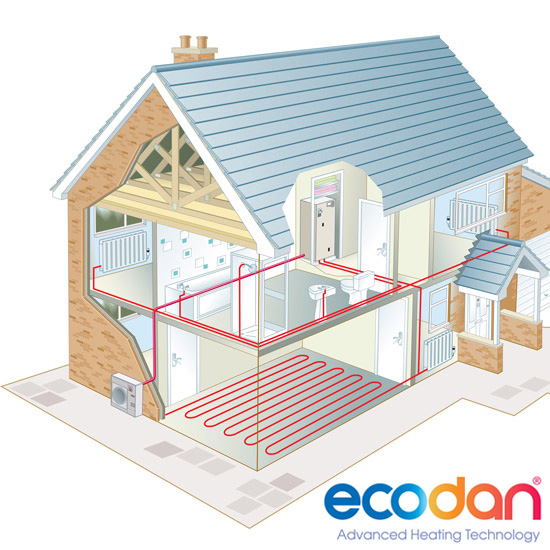
Yes! Renewable technologies aren’t the future they are here today
- Cheaper fuel bills
- Extremely low maintenance
- RHI Cashback
- Lower environmental impact







